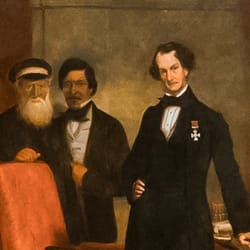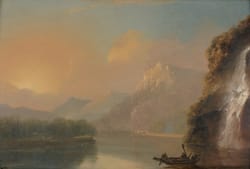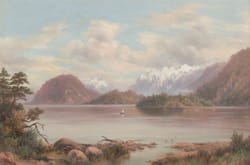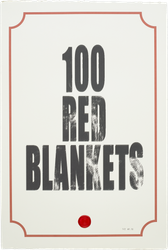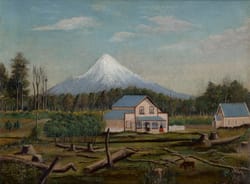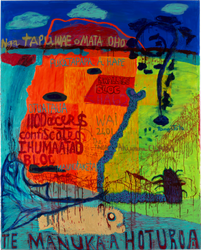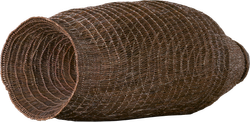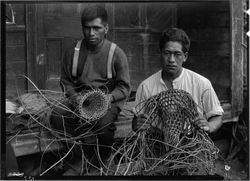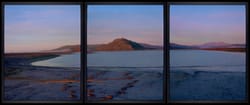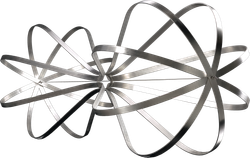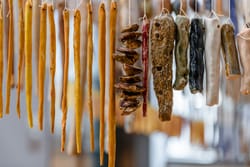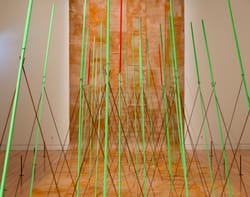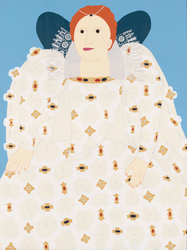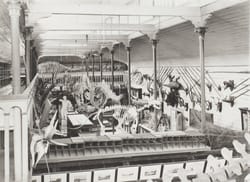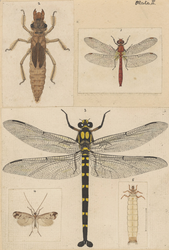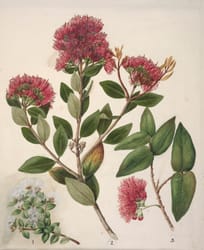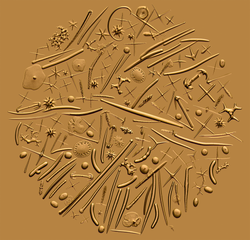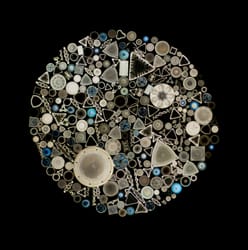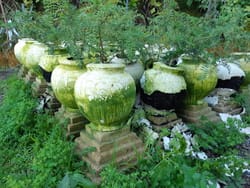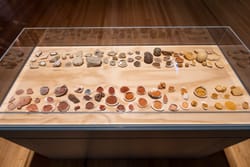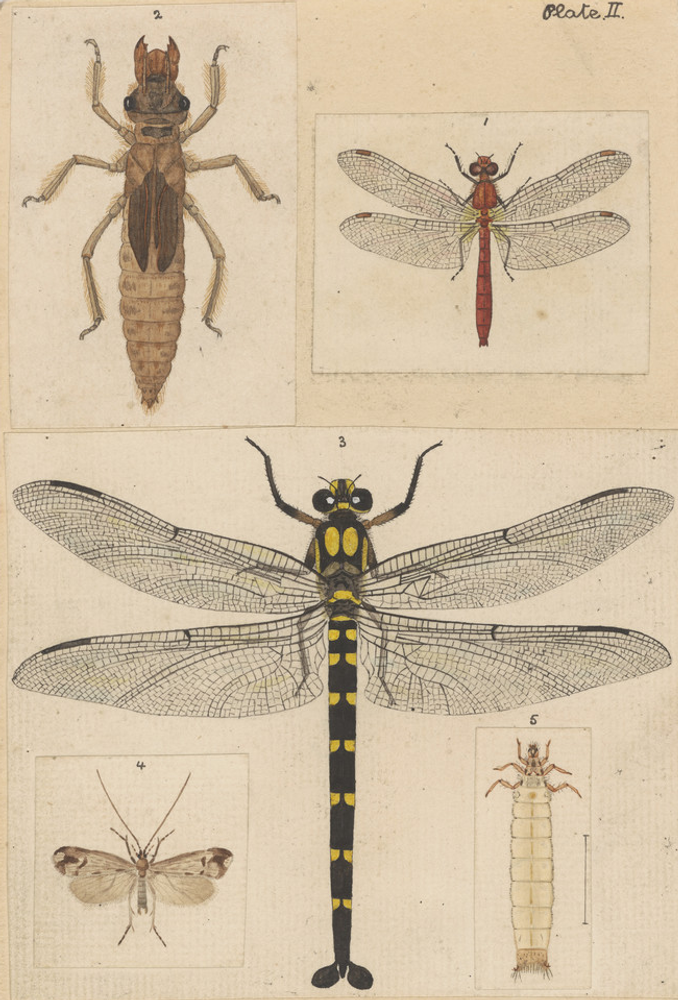
Close
MOANA
Here we are with a display of items from the Hudson collection. And we have company today!
JULIA
Hi, I'm Julia Kasper, I'm the Insect Curator at Te Papa.
PHIL
I'm Phil Sirvid, I'm a Curator of Invertebrates.
MOANA
Shall we stand back for a moment, there's so much to see. Tell me about this display?
PHIL
So, what we have in front of us is part of the collection of the naturalist George Vernon Hudson.
JULIA
Phil, what do you like the most about Hudson?
PHIL
Well, I think he's a total package, isn't he? He's an artist, a scientist and he's created just such a magnificent legacy that helps entomology to this day.
JULIA
I think the thing I like the most is that he was not a professional. He did this amazing work as an amateur. He had another job, he did this all in his spare time.
MOANA
He collected all these bugs? Shall we take a look - but where should we start?
PHIL
Okay, so in the leftmost case we have an assortment of insects Hudson collected in the UK before he came out here. Now it's kind of fun to think these days he'd have a tremendous amount of trouble bringing this through biosecurity.
The next case is cicadas. These are all similarly sized things and they're arranged in columns like soldiers.
The third case, we have weevils. Now there's a lot of different sizes here, and he's arranged them, as best he can, by species. They're all mounted on cards, which is how he liked to mount his beetle specimens.
On the right hand side is a drawer full of Hudson's moths. You can see how tiny some of them are. The work that Hudson must have gone through to actually mount these is quite frankly incredible to me.
Actually, I'm sure Julia can actually talk about this better than I can!
JULIA
When they are freshly dead, they are very soft, but then they become stiff and brittle very easily. So, you have to be quite quick at the beginning to stretch them out, to, position, all the legs and the wings to spread the wings out, especially with moths, it's very difficult to spread the wings out, so they don't break off, and the scales of the wings don't fall off, and also to spread out the antenna.
PHIL
And it's no surprise that this attention to detail is reflected in his drawings and paintings.
MOANA
Can you show us those?
JULIA
On the opposite side of the specimens, you can see a row of books and the book on the left side, is open and you can see on the very first page three drawings: of a larvae, of a pupa and of an adult fly.
The New Zealand glowworm, the larvae, produces light to attract prey because it's carnivorous and it feeds on other little flies and midges that are lured into sticky snares by the light.
It was known that glow worms exist in New Zealand but, the specialists always thought, this is just another kind of a European firefly, which is a beetle.
And Hudson said from the very beginning that this is not a beetle, and his colleagues, the professionals, they, they said, ‘no, that's not true, we know it better, you're just an amateur’, and he struggled a lot to prove that and to convince the professionals, um, that this is a fly and not a beetle.
MOANA
How did he manage that?
JULIA
He collected glowworms from the botanical garden here in Wellington and reared them to adulthood, and out came that small fly. And when he did that, he could finally prove that he was right. That this is a fly and not a beetle.
PHIL
So here in the rightmost cabinet, these large volumes, this is Hudson's Butterflies and Moths of New Zealand. I believe he took some 24 years to produce this masterwork. And the page is open at an illustration of eggs of various moth and butterfly species. So, just as the adult moths and things we see show a great diversity of form and color, so too, do their eggs. And you can see all sorts of different degrees of sculpting and color and shading form right here on the page.
MOANA
Wow these are so beautiful and weird. What else did he draw?
PHIL
All right, so leaving the books and turning around we can see an arrangement of Hudson's illustrations on this wall here.
JULIA
It's really hard to capture colors. And if you stand back, the whole wall looks a bit drab and brown, but if you look a bit closer, you can see many different colours and color patterns … and Hudson created the pigments to capture these colors accurately. He had that skill from his father who worked as a glass stainer and glass worker.
He invented not only his own pigments to create all these drawings, he also created his own paintbrush. Some of the brushes had only one bristle to paint all these little dots and scales.
MOANA
Hey Julia do you have a favourite?
JULIA
If you look at the left of the wall with the drawings, you can see a huge dragonfly, and this is actually life sized.
Hudson used to draw the insects life sized, and this one is so large that you can actually see all the details.
If you look at the wings of this dragonfly, you see a network of lines, and these are actually veins in the wings, And if you, have a look at the wing venation – this is amazing and this is really rare that you can see that in insect drawings during that time – you can believe me that all these veins are in the correct place.
MOANA
I feel I could look at these all day, but we’d better carry on. Thank you both so much!
PHIL
It's been a pleasure showing you Hudson's collection, and his most beautiful illustrations.
JULIA
Enjoy the rest of the exhibition.
MOANA
Cross behind the portrait of Elizabeth and find a row of four pictures on the wall to the left.
